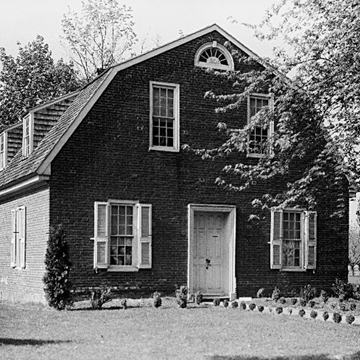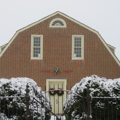Camden town was laid out by a Quaker, Daniel Mifflin, and was long a downstate outpost of that faith. Built on a square plan, the brick meetinghouse sports a gambrel roof, unusual for such buildings in the Delaware Valley. The gambrel is explained by the presence of a schoolroom upstairs, which retains its desks and black-painted plank chalkboards, although no pupils have studied in it since 1882! Thanks to the finished upstairs room, men and women could conveniently hold their monthly business meetings in segregated spaces, which eliminated the need for the usual dividing wall downstairs. Another unusual feature is that the two entry doors to the meetinghouse are not side-by-side, as was Quaker custom, but in opposite walls. The massive original key is still used to unlock them. Camden is one of just three Delaware meetinghouses in continuous operation (for the others, see WL41 and MC1).
You are here
Camden Friends Meeting House
If SAH Archipedia has been useful to you, please consider supporting it.
SAH Archipedia tells the story of the United States through its buildings, landscapes, and cities. This freely available resource empowers the public with authoritative knowledge that deepens their understanding and appreciation of the built environment. But the Society of Architectural Historians, which created SAH Archipedia with University of Virginia Press, needs your support to maintain the high-caliber research, writing, photography, cartography, editing, design, and programming that make SAH Archipedia a trusted online resource available to all who value the history of place, heritage tourism, and learning.


















